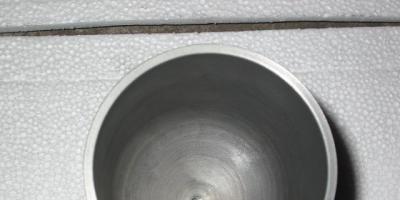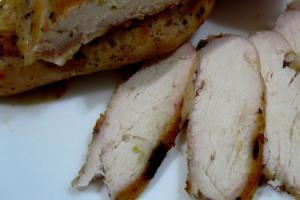Combined houses are built using two or more materials. Projects of mixed-type cottages, according to which they are built, are popular. combined houses made of stone and wood.
Advantages and disadvantages of combining materials
Working designs of combined houses and cottages usually involve a first floor made of stone (brick, gas or foam blocks) and a second floor made of wood. This solution has its advantages:
- Fire protection. Brick and stone are non-flammable. On the ground floor you can install a fireplace, boiler and other equipment with an increased fire hazard.
- Durability. The lower part of the house suffers the most from negative influences, therefore, using brick or stone, you can ensure the durability of the structure.
- Construction of housing from logs and stone or brick is cheaper than entirely stone (or brick) cottages. Savings are achieved not only due to the lower cost of wood, but also due to reduced insulation costs, Finishing work.
- Energy efficiency. Wood retains heat better - this allows you to save on heating costs.
- Reducing the overall weight of the building and saving on foundation construction.
- Aesthetics. With proper design, a house made of combined materials It turns out unusual and attractive.
But for the compatibility of different building materials, it is necessary to protect one raw material from another: for example, wooden floor isolate from the lower part of aerated concrete and brick. If the first floor is monolithic and the second floor is made of logs, a concrete base is required.
Common options for combining materials
- stone and wood - a classic combination;
- from blocks and timber - a budget option;
- brick and timber or rounded logs - reliable housing, can be of any size;
- foam blocks and brick cladding- houses made of bricks and foam blocks imply a reduction in construction costs;
- monolith and log - a strong structure suitable for a respectable cottage;
- monolith and frame - suitable for regions with mild climates.
The layout of the internal space in them is made taking into account the characteristics of the materials.
Private, beautiful spacious house, built with your own hands, attracts many. But it's one thing to dream about own home, and it’s completely different to erect a structure from the foundation to the roof. Today, residential buildings made of stone and wood are very popular.
The chalet style is gaining momentum and becoming a fashionable trend in construction. Designers offer a variety of designs for combined houses belonging to the elite, middle and economy classes. In most cases, future owners of private housing are interested in inexpensive projects of combined houses made of stone and wood.

In addition to low cost, combined chalet houses made of stone and wood attract many advantages. Among these, it should be noted:
- Durability of the structure.
- High level of wear resistance and strength.
- Fire safety.

Plus, wooden structures are cozy and heat-preserving. And in combination with brickwork, such a structure looks beautiful and solid. To ensure that the materials used are not wasted, craftsmen recommend thinking in advance in what way they will be used. The most popular is the project of a combined house in the chalet style.

Not good options
Designs of combined houses are different. Reviews from masters claim that not all of them are successful. For example, an option in which a brick structure is first built and then lined with wood paneling can ultimately lead to damage to the materials. Let's not forget that brick and wood have different coefficients of thermal expansion. If the brickwork is clad with wood correctly, then sufficient distance must be left between the materials. But over time, insects and rodents may appear in this space.

The reverse option is also possible, in which wooden structure lined with brick. But rearranging the sequence of materials used does not change the essence. Between layers of materials, mold, mildew, and bark beetles can form.

Best projects
Reviews about turnkey combined houses made of stone and wood claim that the most optimal combination of materials is floor-by-floor, as shown in the photo. For example, a project for such a structure might look like this:
- First floor - brick building, in which they are located utility rooms– kitchen, dining room, boiler room, guest room with fireplace.
- The second floor is made of wood. A bedroom, a nursery, and guest rooms are located here. The delicate aroma of wood will promote relaxation and tranquility.

Reviews from craftsmen claim that to create an ideal combined house project, it is necessary to take into account the requirements and wishes of the customer. In any case, the master must warn the future owner that it is better to place engineering Communication on the first floor. Considering the lightness of wood, there is no need to build from of this material first floor. The supporting walls must be made of stone so that the house as a whole is strong and reliable.

Variations
Combined house stone wood turnkey economy class, can be built from concrete monolithic foundation, ceramic bricks and pine wood. Since the house is two-story, stairs inside the structure are a must.

An excellent choice is wooden stairs inside the house and monolithic ones outside. A magnificent addition to the building is the attic on the second floor, which has decorative finishing similar in color to the decoration of the walls of the first floor.

Economy-class projects of combined houses made of stone and wood in the chalet style must necessarily include a spacious terrace. This element of the structure is a distinctive feature of such housing. Another mandatory element of a successful chalet-style project is the presence of a flat roof with a wide wingspan. Thanks to this solution, the wood part of the structure is protected from moisture and precipitation.

What could be better than natural building material? This question can be considered rhetorical. When thinking about natural things, wood immediately comes to mind. It has unique qualities that cannot be replicated in the laboratory. But don’t forget about natural stone. Its strength and resistance to various influences is amazing. A natural stone is great solution for building the foundation. Why not combine them in one building? How this can be done will be discussed in the article.
What is the advantage
The model of combined houses, where the main materials are wood and stone, is not new. Initially, this solution was used in the Alpine mountains. And this is fair, because all the building material was at hand. Stones were used to build the foundation. The first floor could also be made of it, which was used as a storage room for various utensils. Due to heavy snowfalls, the first floor was often covered with snow, but thanks to the stone there was no detrimental effect on the structure. On the second floor of the house there were rooms for the inhabitants. Wood retained heat perfectly, so even strong winds were not a problem. Guided by this information, it is easy to highlight the positive aspects regarding combined buildings:
- high strength;
- durability;
- good thermal insulation;
- resistance to various weather conditions;
- availability of material.

When choosing a combined option, it is also important to know about the disadvantages of this structure:
- high cost of the project;
- certain complexity of construction;
- the need for high-quality insulation;
- the need to insulate the basement.

It is worth saying that in modern construction instead of natural stone in combined versions can be used different kinds blocks, and natural stone serves as cladding for them. The cost is as follows combined design significantly higher when compared with frame house, but in terms of strength it surpasses this one. The construction of a combined building requires a special and attentive approach to detail; only in this case will it be possible to combine wood and stone in the best possible way. It should not only be practical, but also attractive. building block needs insulation. If this is not done, then significant heat loss will occur through it. The wood must be separated from the building blocks by waterproofing. In its absence, the support beams may rot, which will lead to destruction.
How not to build

The wrong way to combine different building materials can significantly reduce their service life. For example, in some cases, the developer proposes to perform partial or complete cladding of a brick building using wooden lining. From an aesthetic point of view, this interesting solution, but from a practical point of view, you will have to take into account many points and treat the wood in a special way so that it is not subject to putrefactive processes. There have been cases where sufficient clearance was not provided between the brickwork and timber cladding. Because of different coefficient expansion, cracks and deformations appeared in the wood.

Cladding a wooden structure is also not always a good idea. If the building is assembled from rounded timber, then there is no need for such cladding. In a relationship frame houses It's important to be careful. Partial cladding is allowed, as it can add zest to the project, but it is simply impossible to complete a full cladding with stone. It has a significant weight, which the walls and foundation are not designed to support.
Historical background

The best way to construct a combined building will be to understand what they were like originally. Special attention was given to the roof. In a combined house, it was necessarily pitched and gently sloping. The angle of inclination was small to reduce windage and reduce wind load. The rafter system was massive, and additional stones were laid on top of the flooring to hold it in place. In the original houses, called chalets, the roofs had a large overhang. In some cases it reached three meters. This was done to achieve two goals:
- protect the wooden part of the house;
- collect more snow.

The large overhang of the combined house perfectly protected its wooden part from the effects of precipitation. With constant contact with moisture and water, wood loses its shape and may dry out. Besides, in rainy weather under such slopes it was possible to do certain things. In summer, a wide overhang protected residents from the scorching sun. A large overhang also increases the area of the roof itself. The larger it is, the more snow can be retained on it. Snow serves as a natural insulator, which reduces heat loss through the roof. The attic floor in combined chalets has always been residential.
Note! This approach can also be used in modern construction of combined houses where climatic conditions allow it. Under a wide overhang, for example, you can organize a terrace.

Roofing in classic version wooden shingles protruded from the combined house. It was made from aspen, cedar, larch or oak wood. The elements were fixed to rafter system wooden nails. Such flooring for a combined house could easily be made independently. The advantage was the ease of repair, as well as excellent sound insulation. From modern materials a soft one would be an excellent replacement bitumen shingles. It can be chosen to match the overall structure, which will allow it not to disturb the harmony.

One of the notable features of the house, which is made by combining materials, is a wide balcony. It was covered with a canopy at the top and was a continuation of the second floor. It was supported by wooden piles. A similar approach can be applied in modern combined houses. Good decision There will also be the use of French windows, which will blur the line between the room and nature.
Finished projects

An interesting completed project for a combined house made of stone and wood can be seen in the photo above. The basis of the combined house is natural stone, and not a modern block. This approach made it possible to perfectly fit the house into the landscape. A natural hill was chosen as the site for the construction of the combined house, so a garage was built below, the entrance to which was also paved with natural stone. Stone is also present in a fragmented finish, which made it possible to erase the boundary between stone and wood. The roof is tiled, and the overhangs are made with sufficient projection.

The photo above shows another one interesting project cottage combined house. This option for a combined structure will look great outside the city. The lower part of the building is fragmentarily trimmed with stone, and the upper part is assembled from timber. There is a large terrace in front of the entrance, and on the second floor there is a balcony, which is protected from precipitation by roof overhangs. The basis of the combined building is strip foundation, and the terrace is set to columnar. This allows you to reduce costs and not lose strength.

Above is another option for a combined house. Its peculiarity is that it already looks like a chalet, but like a Russian hut. The wooden part of the combined house is made of rounded timber. This achieved excellent thermal insulation in the combined building. For the windows of the combined house, frames from plastic profile, which have lamination. The foundation of the house is recessed and the outside is finished with stone. Soft tiles harmonize perfectly with the materials.

The combined building, which can be seen in the photo above, is presented in a modern minimalist design. Its upper part is built frame method, which made it possible to reduce the load on the first floor.

This project is an example of combinations in façade decoration. The combined building is built from wooden beam. The roof slopes have a small angle of inclination and wide overhangs. The corner of the house and the base are finished with natural stone. There is not much of him, so he does not provide high pressure on the walls. On the first and second floors of the combined building there are French windows that occupy the entire height of the wall.

This combined house project is excellent example how you can beautifully combine two different building materials. As you can see, the combined house was built according to frame technology. Its first floor is decorated with natural stone. The support pillars on which part of the combined building rests are also covered with natural stone. On top there is a large terrace where you can sunbathe.

In this project, everything is thought out to the smallest detail and perfectly combined. Under the upper terrace of the combined house there is a recreation area, which is perfectly protected from precipitation. The area near the first floor of the combined house is filled with concrete and does not protrude above ground level, which makes it possible to eliminate sharp transitions. Natural stone is not only present on the lower level, but is also visible on the chimney and part of the second floor. The roof finish is very similar to that used in the classic version of the chalet. A video about the combined house project is below.
Combination of materials – favorite hobby designers, in capital construction used to solve important practical problems. Proper combination of the physical qualities of stone and wood in the load-bearing walls of a building gives the developer a tangible benefit in cost and comfort.
It is these two factors that have made houses made of combined materials popular and widespread in modern suburban construction.
What combinations are reasonable and permissible when constructing such a structure?
Most often, stone (brick, monolithic concrete, aerated concrete or expanded clay blocks). The second floor is built from rounded logs or laminated veneer lumber.
It should be noted that combinations of different wall materials may also affect the exterior. A combined house allows you to use any façade decor options: brick walls The first floor can be finished with a blockhouse, insulating them using the “ventilated facade” technology.
The second frame floor can be improved decorative plaster or stone tiles. As an example, we invite you to look at the photo below.

Looking at such a house, you will not be able to unambiguously answer the question of what it is built from. load-bearing walls. Although a combined technology of wall construction is also used here. The first floor of this building is brick, lined with siding. The second is a wooden frame finished with ceramic tiles.
Constructive options for combined houses
Despite the variety of facade decor, the construction of combined houses must comply with the main principle: 1st floor is stone, 2nd floor is wood. It provides the building with the necessary strength and creates conditions for comfortable living on the second floor. Another problem solved by the combination of materials is reducing the labor intensity and cost of construction.

Anyone who does not want to spend extra money on exterior decoration is doing the right thing. The combination of stone and wood is optimal not only for structural reasons, but also from an aesthetic standpoint. Therefore, do not hide behind the finishing what looks perfect in itself.
An example would be a mansion built in a deliberately rough combination natural stone and logs. It fully complies with the canons of country style.

It originates from the harsh mountainous terrain, invented by Alpine shepherds. It also used the idea of combining durable stone and warm wood.
Life in the mountains requires maximum reliability and functionality. Therefore, the first level of the chalet is always built from durable rock that is not afraid of snow debris, rockfalls and water. The second floor is designed to create comfort and coziness. Can't find one for these purposes best material than natural wood.

The “ancestral sign” of all buildings built in the chalet style is wide roof overhangs that protect the walls from heavy rains and melting snowdrifts.
Modern combined houses made of stone and wood are extremely diverse, since the choice of wall materials is very wide. If you are not satisfied with torn stone or flat limestone “flagstone”, then build the first floor from. They are quite durable and at the same time as warm as natural wood.

When preparing for construction, do not forget that houses made of foam blocks and wood require a reliable connection between the first and second floors. Cellular concrete is a rather fragile material. Therefore, it will not hold the steel anchors securing the second level support beam.

A competent solution for such a design is pouring on foam block walls monolithic belt made of reinforced concrete. It increases the spatial rigidity of the building and allows you to securely fix the anchor bolts.
The appearance of a foam block wall is not very expressive. Therefore, it is better to cover it with blockhouse or siding, laying a vapor barrier and a layer of mineral wool insulation behind the façade cladding.
For combined construction cottage can be used. They are stronger than foam concrete, not as fragile and very warm. Finishing arbolite walls is not labor-intensive, since any decorative plaster adheres well to them.

The second floor can be built from planed timber. This material retains heat well in a residential floor and does not require finishing cladding.

If you need a three-level combined house made of brick and timber, then build it according to this scheme: the ground technical floor is monolithic reinforced concrete, the first level is brick, the second is a frame or log house.
Talking about frame version walls of the second floor, we note that it will not only save your money, but will also allow you to flexibly change the internal layout, adapting it to family needs.

You can hide the frame of the second floor behind the finishing. Another interesting option- specially highlight it, turning it into an element of facade decor. A half-timbered structure is best suited for this – an old one frame system, in which the posts, beams and cross braces face the façade.

A serious problem with all cottages is dampness on the ground floor. A combined house solves it simply and functionally. The lower floor is reserved for utility rooms. Here you can equip a boiler room, a bathhouse, a workshop and a garage. Bedrooms, bathrooms, dressing rooms, playrooms and a kitchen are located on the second, drier floor.
A combined house and a combined facade are not the same thing!
As we have already said, the combination of different wall materials is the main feature of a combined building. In contrast, the combined façade of a house can be used on any residential building.

For example, by building a cottage from insulated sandwich panels, you can easily “disguise” it as a stone one. For this you can use ceramic tiles, sandstone, porcelain stoneware or rustic plaster. If ordinary, rather than facing, brick is used for laying walls, then a “combi-facade” will also be appropriate.

The photo shows a house being built from brick and timber. Obviously nondescript brickwork additional finishing will be required. It doesn’t have to be decorated like a stone. It is enough to fill the blockhouse along the guides and your house will be completely “wooden”. Another option is a combination of semicircular false logs on the first floor and laminated veneer lumber on the second.

Pros and cons of the combination idea
Having noted the main advantages of combined buildings: efficiency, planning flexibility, aesthetics and functionality, we will point out the disadvantages of such buildings.
The main one is different time“life” of stone and wood. In rocks it reaches 150 years. At best, the tree will last half a century. For light frames and panel walls this period will be even shorter. Therefore, a moment will inevitably come when the first stone floor is still quite strong and reliable, and the walls of the second floor already require repairs.
Since combined country houses in Russia are still quite young, then negative experience different speeds There is no aging of wall materials. Therefore, reviews from their owners are mostly positive.
To summarize, we advise everyone who has decided to build a combined cottage not to forget about different periods operation of the first and second floors. To extend the life of the walls, buy well-dried and antiseptic wood, and trust the assembly of the frame to experienced professionals, not hackers.
For wooden frame A properly assembled drainage system is required to prevent moisture from entering the wood. In addition, at the construction stage, constant quality control of the sealing of all cross sections is required. wooden racks and beams.
When choosing materials for building a private house or cottage, they often choose combined options. Houses made of foam blocks and wood can be called quite popular today. They hold heat well and look great on the outside. Such buildings have certain advantages, but they also have some disadvantages. Therefore, before choosing one or another project, it is better to first familiarize yourself with all the pros and cons of such buildings, as well as the features of their construction.
Today you can find quite a lot of convenient standard designs for houses and wood. Most often these are two-story buildings. The first floor is usually built from foam concrete, and the second floor is made from wood. Such structures have high thermal insulation qualities, are quite durable and are a relatively inexpensive option.
Advice. A material such as foam concrete is hygroscopic. Therefore, to protect walls made of foam concrete blocks, further external finishing, which slightly increases the total cost of construction. And this must be taken into account when planning your expenses for building a house.
On the ground floor of a building made of foam blocks and natural wood Usually there is a kitchen, a bathroom and various technical rooms. For the construction of the walls of the upper floor, where the bedrooms and other living spaces will be located, timber or other similar material is used. This allows you to create that special atmosphere in your home that can only be achieved using natural wood.
You can also find other projects of such combined houses, for example, when an extension made of foam concrete blocks is adjacent to a wooden building, which will house the necessary technological premises. After viewing the same photos and videos various options houses made of foam blocks and wood may be desirable or completely abandoned standard project, or make only some of your changes to it. But for this it is better to contact a specialist.
Foam concrete and wood: advantages of combined houses
Structures made of foam blocks and wood are a convenient, reliable and relatively low-cost option for housing construction. Foam concrete blocks quite light in weight and large in size. Due to this, the walls of the building can be erected in a fairly short time. There are other advantages of combining materials when building a private house, namely:
- the use of foam concrete allows the use of lightweight types of foundation, which significantly reduces the cost of building your home and simplifies the overall work;
- these buildings are more reliable in terms of fire safety, since foam concrete is not a combustible material;
- the shrinkage of such houses is much less than those made entirely of wood material, which means that interior finishing work can begin almost immediately after completion of construction;
- wood is used only for the construction of the second floor. Wooden structures houses do not come into contact with snowdrifts and soil. They will be less susceptible to rotting, the sudden appearance of fungus, and attacks by certain insects - wood pests;
- The cost of composite building projects is usually lower than that of houses made entirely of wood.
Such structures also have certain disadvantages. Among them are the following two disadvantages that relate to foam concrete:
 Construction of a cottage
Construction of a cottage - the need to finish the facade of the first floor of the building, since the foam concrete material absorbs moisture quite well;
- Although foam concrete blocks are a durable material, they are quite fragile.
Attention! For structural reliability, when constructing a building made of foam blocks and wood, a reinforcing belt for floors is mandatory.
Selection of wood material
Foam concrete is not a very expensive building material. But the choice of one or another wood material can significantly increase or decrease the overall cost of building a building. To build the top floor of the house you can take Various types timber, rounded log, or use frame base and OSB boards.
The most durable and reliable is laminated veneer lumber. It is durable and looks great externally. But this material has a fairly high cost. Its use for the construction of the second floor of a household significantly increases the overall costs of its construction.
Massive profiled timber is cheaper than its glued counterpart. It is of good quality and meets all standards, although it is somewhat inferior to laminated timber in some respects. And the most economical option can be called the use of untreated timber, which is low in cost, as well as the use of frame technology.








